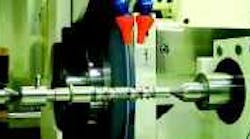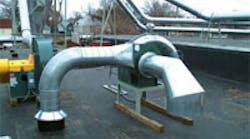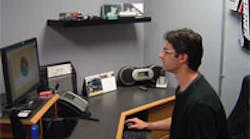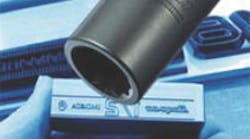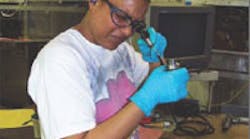A Studer grinder tackles the tough tolerances on Parker's electro/ hydraulic servo valves, which are inside hydraulic control modules for aircraft.
A battery of Studer grinders plays a pivotal role in producing Parker Aerospace's flight-critical components.
The QuickSet software package on Studer grinders lets Parker's operators change from one part to another by simply calling up a new part number at the machine.
The Control Systems Division of Parker Aerospace, Ogden, Utah, produces primary hydraulic flight controls for commercial aircraft. At the heart of this chipmaking facility is just about every category of machine tool: HMCs, turning centers, engine lathes, and a large battery of Studer grinders for precision O.D. and I.D. grinding. These grinders play a pivotal role in producing the company's flightcritical components, those that are crucial to safe takeoffs, maneuvering, and landing.
For instance, the Studers tackle the tough tolerances on Parker's electro/hydraulic servo valves, which are inside hydraulic control modules. Two cylindrical parts, a slide that travels within a sleeve, make up a valve. Slides and sleeves range from 0.375 to 1.250 in. in diameter and 2 to 10 in. in length and are made from Nitroloy, 52100, 440C, 4340, and 15-5 stainless. Diametric tolerances are from 0.00008 to 0.0004 in., and straightness and roundness must be within 0.000030 in. According to Kent Westergard, project manager at Parker, consistently and repeatably hitting such tolerances takes an extremely precise machine.
The Studers, in particular S40s, have also enabled Parker to approach jobs differently with more-precise outcomes. One such job is thread grinding.
"Thread grinders," explains Westergard, "have a wheel that's kicked over at an angle to form the thread helix. I didn't believe it was possible to grind a thread on a machine (the Studer S40) with a straight wheel in the same axis as the workpiece."
To erase Westergard's skepticism, United Grinding Technologies, which represents the Studer line in the U.S., conducted threading tests on an S40 using Parker's parts. "We spent days measuring the test threads — sectioning them, checking with ring gages, snap gages, and so on. We could not find anything wrong with the threads," says Westergard.
As part of Parker's leanmanufacturing initiative, partchangeover time is an important issue, and the Studer grinders make changeovers fast and easy for the shop. According to Westergard, the machines do so because of their swiveling workheads with up to four wheels per head and, most importantly, their QuickSet software.
With the QuickSet package, operators change from one part to another by simply calling up a new part number at the machine, which sets itself based on previously entered parameters. There is little changeover if the new part is within the working range of the workhead and tailstock.
"In some cases, setup time for changeover approaches zero," says Westergard. "I know some will take issue with the idea of zero setup time, but when you compare the minute or so required now with what it took in the past, the time saved in setup is dramatic."
United Grinding Technologies
Miamisburg, Ohio
grinding.com
